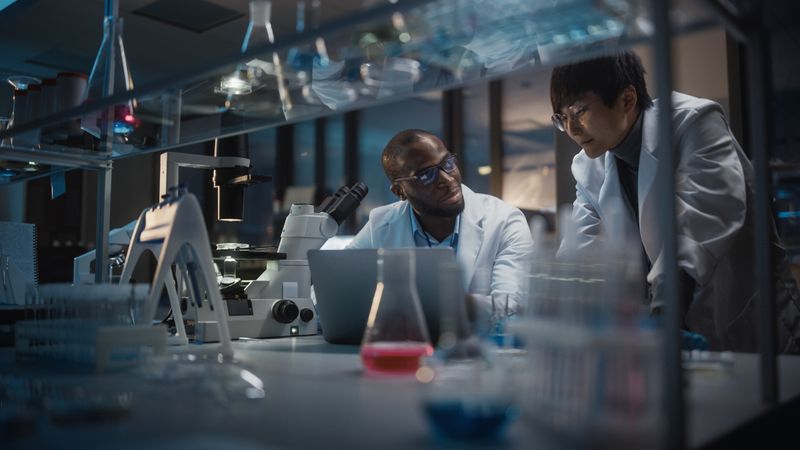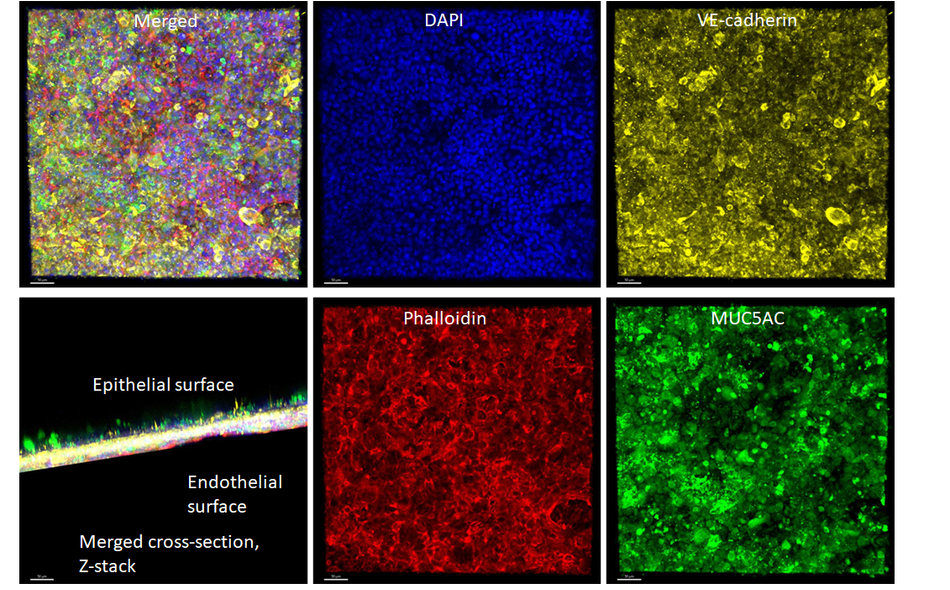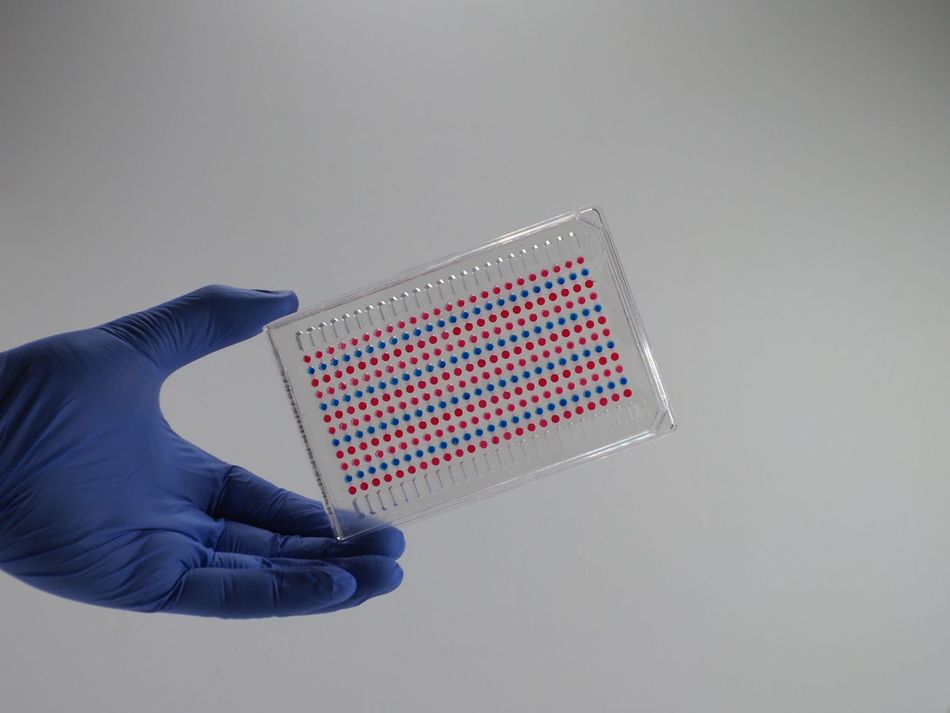The future of drug discovery: AI, simulated organs, and no more mice
AI is transforming the pharma industry with a fast, reliable, inexpensive, and cruelty-free drug discovery and development process.
This is the first article in a 3-part series examining the future of drug discovery.
Introduction
Rapid new drug discovery had never been more critical in a world with an aging population and increased instances of infectious diseases. While traditional lab methods have proven reliable, the recent covid-19 pandemic has shown the need for further innovation.
The global drug discovery market size was valued at US$ 74.96 billion in 2021.[1] Despite such massive investments, the number of new drugs approved by the FDA remains low. Current drug discovery methods are slow, expensive, dominated by big pharma, and require cruel animal testing procedures.
The world is in urgent need of better drug discovery methods. Recent advancements in artificial intelligence, machine learning, and novel organ simulation are driving a wave of revolution in the healthcare sector. The industry is shifting toward new, faster, and more reliable methods for drug discovery.
Modern Methods Of Drug Discovery And Development
Drug discovery plays a significant role in battling diseases. Whether it is for a newly spreading pandemic or a well-known incurable disease, the search for new and better drugs is never-ending.
Currently, two popular screening methods are used for drug discovery: classical pharmacology and reverse pharmacology. Classical pharmacology examines natural products and plant extracts to find their therapeutic effects. Whereas reverse pharmacology involves the identification of the function of the molecule (gene/protein) targeted by the disease and its role.
Both screening methods lead to a huge list of potential targets, further sorted by target validation and pre-clinical animal testing. With the current drug discovery process, it takes almost half a decade before the drug is tested on a human.
Limitations Of Current Methods For Drug Discovery
In a recent study, the estimated median cost of bringing a new drug into the market was found to be $985 million, while the average cost could reach up to $1.3 billion.[2] Drug development is a long, complex, and costly process. To cut expenses, major pharma companies reduce their investment in the discovery of new medicines. Thus, reducing the possibility for innovations.
The 2D cell cultures are unable to precisely select clinically active drugs because they don't replicate human biology. It causes bottlenecks with testing and validation, resulting in a slow and unreliable drug development process. On average, a new drug takes around 12 years to proceed from first thought to sitting in your medicine cabinet.[3]
Even today, pre-clinical research heavily relies on animal testing. Many mice, rabbits, guinea pigs, monkeys, and other non-human primates are sacrificed in the drug discovery process. While countless animals are left to suffer in pain after experiments, more than 110 million animals are killed in U.S. laboratories each year.[4]
Influential AI-Based Innovations In The Healthcare Industry
AI is revolutionizing the biotech industry from assisting in the fight against the covid-19 pandemic [7] to building customized organ-on-a-chip [8] to understand complex diseases such as cancer [6]. It has various applications in drug target identification, drug discovery,[9] image screening, predictive modeling, etc.
Let's dig deeper into some of the most recent AI-powered breakthroughs in the healthcare industry.
The use of AI in protein modeling
Protein is the building block of the cell. Each protein has a unique 3D structure designed to perform a specialized function in the human body. We can better understand its working when we have the precise prediction of the protein's 3D structure and modeling. Furthermore, the information can be used to control or modify a protein's function, assist drug discovery and forecast the impact of mutations.
Before the advancement of AI in the biochemical industry, protein modeling was expensive, complex, and highly time-consuming. An AI program named AlphaFold was recently unveiled by Google's DeepMind which can predict the 3D structure of proteins with 90% accuracy, solving a 50-year-old grand challenge in biology.[10] With AlphaFold, 3D protein structure prediction and modeling have become highly accurate, cost-effective, and faster than ever.
Digital organ simulation
With the help of bioinformatics, machine learning, and AI, scientists can simulate any human organ digitally. The simulation is created with 3D image-based medical records, diagnostic, pathologic, and other information to better diagnose and experiment with treatments. It can thoroughly predict the impact of the diagnosis on the patient and assist in selecting the best treatment method.
Digital simulation of human organs like the heart, eyes, lungs, kidneys, and other or has numerous applications in diagnosis and treatment planning. At the medical tradeshow, MEDICA 2021, AIBODY introduced the world's first digital human organism.[11] AIBODY's virtual patient software can simulate any medical condition or treatment and produce highly detailed physiological responses. It aids in a better understanding of human anatomy and the development of artificial organs for successful transplantation and new drugs for treating various diseases.
Organ-on-a-chip
Organ-on-a-chip is a microfluidic cell culture system with natural miniature tissues that mimic a human organ's function.[12] It can replicate human physiology to aid in studying organ function, human pathophysiology, and the effect of therapeutics. It overcomes the challenges associated with the traditional 3D cultures by creating a micro-scale system on a chip. The Liver Chip developed at Harvard's Wyss Institute [13] greatly enhanced liver toxicity testing for better drug discovery and development.
Organ-on-a-chip can be used as a tool in drug screening, disease modeling, and drug testing. It can recreate species-specific toxicity responses. Thus, eliminating the need for animal testing in pre-clinical trials and aiding in producing safer drugs.
The Future Of AI In Drug Discovery And Development
AI provides the path to much safer and more reliable drug discovery and development techniques. It overcomes various challenges and constraints of traditional R&D by analyzing existing data to gain new biological insights. The technology will enhance target identification, biomarker development, and patient stratification.
With AI-enabled research methods, scientists will be able to precisely:
Recapitulate human physiology and disease states in vitro to provide better diagnoses and determine the impact of various treatments.
Predict human drug responses at clinical dose exposures to determine the toxicity level of the drug and the best dosage level for optimum results.
Animal organ chips replicate species-specific drug responses to understand better the effect of different diseases in different species and the response of possible treatments.
Figure 2: Finnadvance's AKITA Plate, enabling high throughput barrier formation under dynamic flow conditions. Image credit: AKITA.
Conclusion
The current drug discovery methods are slow, unreliable, cruel, and expensive. AI is transforming drug discovery and development by improving the efficiency of clinical trials and enabling more agile and experimental working methods. The biotech industry has witnessed various technological breakthroughs, including precise protein structure prediction and organ-on-a-chip. We can expect these life-saving and life-changing developments to continue with the substantial investments in A.I.-assisted drug discovery.
About The Sponsor: AKITA
AKITA is the product line by Finnadvance Ltd., a Finnish biotechnology company that develops highly scalable organ-on-chip platforms. Our lab and team operate in Oulu, Northern Finland. By enabling physiological model developments, drug development and research can be significantly accelerated and made highly cost and resource-efficient, while producing more reliable results. We provide the highest throughput platforms with accurate biological modeling.
References
Precedence Research. Drug Discovery Market (By Drug Type: Small Molecule and Large Molecule; By End User: Pharmaceutical Companies, CRO, Others; By Technology: High Throughput Screening, Pharmacogenomics, Combinatorial Chemistry, Nanotechnology, Other Technologies) - Global Industry Analysis, Size, Share, Growth, Trends, Regional Outlook, and Forecast 2021–2030. Report Code: 1464 [Internet]. [cited 24 June 2022]; Available from: https://www.precedenceresearch.com/drug-discovery-market
Olivier J. Wouters, Martin McKee, Jeroen Luyten. Estimated Research and Development Investment Needed to Bring a New Medicine to Market, 2009–2018. [Internet] JAMA. 2020;323(9):844–853. doi:10.1001/jama.2020.1166; Available from: https://jamanetwork.com/journals/jama/fullarticle/2762311
Sandra Kraljevic, Peter J Stambrook, Kresimir Pavelic. Accelerating drug discovery. [Internet] 2004; 5:837–842; Available from: https://www.embopress.org/doi/full/10.1038/sj.embor.7400236
PETA. 11 Shocking Animal Testing Statistics That Are Hard to Swallow. [Internet] [cited 24 June 2022]; Available from: https://www.peta.org/features/animal-experimentation-statistics/
Ingrid Torjesen. Drug development: the journey of a medicine from lab to shelf. The pharmaceutical journal [Internet]. 12 May 2015; Available from: https://pharmaceutical-journal.com/article/feature/drug-development-the-journey-of-a-medicine-from-lab-to-shelf
Rakesh Sharma. Artificial Intelligence - The future of pharma industry. [Internet] [cited 24 June 2022]; Available from: https://www.expresspharma.in/artificial-intelligence-the-future-of-pharma-industry/
Kim Martineau. Marshaling artificial intelligence in the fight against Covid-19. Wevolver [Internet]. 20 May 2020;
Holly Evarts. Plug-and-Play Organ-on-a-Chip Can Be Customized to the Patient. Wevolver [Internet]. 02 May 2022; Available from: https://www.wevolver.com/article/plug-and-play-organ-on-a-chip-can-be-customized-to-the-patient
Daniel Meierhans. Harnessing AI to discover new drugs inspired by nature. Wevolver [Internet]. 09 July 2021; Available from: https://www.wevolver.com/article/harnessing-ai-to-discover-new-drugs-inspired-by-nature
Research- DeepMind. AlphaFold: a solution to a 50-year-old grand challenge in biology. [Internet]. 30 November 2020; Available from: https://www.deepmind.com/blog/alphafold-a-solution-to-a-50-year-old-grand-challenge-in-biology
BUSINESS WIRE. AIBODY Introduces World's First Digital Human Organism at MEDICA 2021. [Internet]. [cited 26 June 2022]; Available from: https://www.businesswire.com/news/home/20211114005010/en/AIBODY-Introduces-World%E2%80%99s-First-Digital-Human-Organism-at-MEDICA-2021
Chak Ming Leung, Pim de Haan, Kacey Ronaldson-Bouchard, Ge-Ah Kim, Jihoon Ko, Hoon Suk Rho, Zhu Chen, Pamela Habibovic, Noo Li Jeon, Shuichi Takayama, Michael L. Shuler, Gordana Vunjak-Novakovic, Olivier Frey, Elisabeth Verpoorte, Yi-Chin Toh. A guide to the organ-on-a-chip. Nature Reviews Methods Primers. Article number: 33 (2022) [Internet]. 12 May 2022; Available from: https://www.nature.com/articles/s43586-022-00118-6
Lindsay Brownell from Harvard University. Liver-Chip Identifies Distinct Drug Toxicities in Human, Rat, and Dog Models. Wevolver [Internet]. 15 November 2019;
Duxin Sun, Wei Gao, Hongxiang Hu, Simon Zhou. Why 90% of clinical drug development fails and how to improve it? Acta Pharmaceutica Sinica B- ScienceDirect [Internet]. 11 February 2022; Available from: https://www.sciencedirect.com/science/article/pii/S2211383522000521




